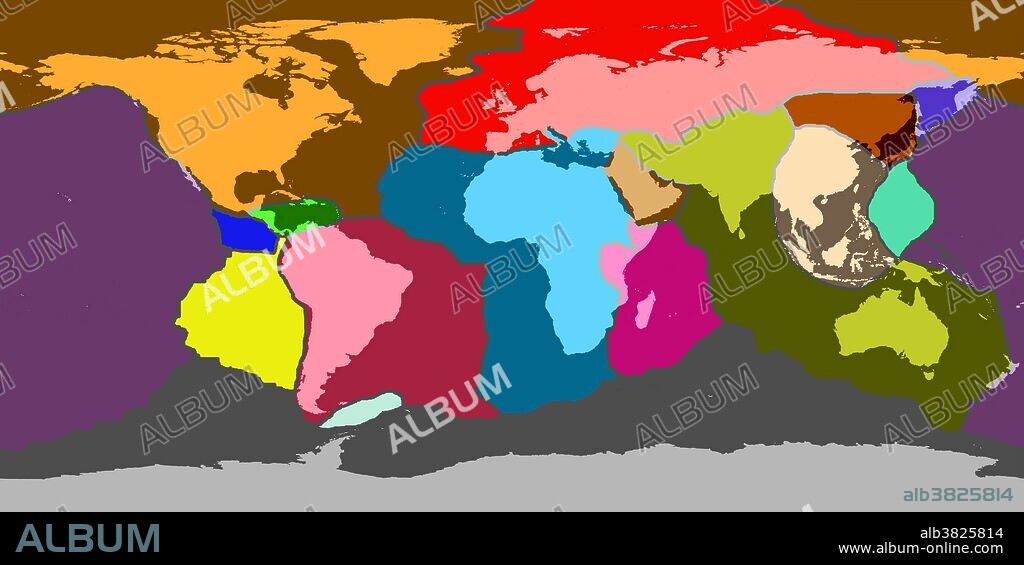alb3825814
Earth's Tectonic Plates

|
Añadir a otro lightbox |
|
Añadir a otro lightbox |



¿Ya tienes cuenta? Iniciar sesión
¿No tienes cuenta? Regístrate
Compra esta imagen

Título:
Earth's Tectonic Plates
Descripción:
Ver traducción automática
Earth's tectonic plates. The Earth's surface is divided up into several major plates. These are rocky slabs that float and move on the more fluid layer beneath them. The boundaries between plates are geologically active areas where the majority of the world's volcanoes and earthquakes occur. Plate tectonics, the study of the plates, has revealed a huge amount about the Earth. For instance, South America's east coast appears to fit into Africa's west coast because they were once joined; the plates that hold them are moving apart. Also, where the Indian plate collided with the Eurasian plate, the Himalayas were formed. The seven major plates shown here include the Pacific Plate (dark purple), North American Plate (orangey-brown), African Plate (blue), Eurasian Plate (red), South American Plate (pink), Indo-Australian Plate (olive green), and the Antarctic Plate (grey). Some other plates include the Arabian Plate (brown), Nazca Plate (yellow), Cocos Plate (cobalt), Caribbean Plate (bright green) Scotia Plate (off-white), Philippine Plate (turquoise), Somali Plate (bright purple), Indo-Chinese Plate (greyish-brown), Amur Plate (dark brown), and the adjacent Okhotsk Plate (purplish-blue).
Crédito:
Album / Science Source / Jessica Wilson/NASA
Autorizaciones:
Modelo: No - Propiedad: No
¿Preguntas relacionadas con los derechos?
¿Preguntas relacionadas con los derechos?
Tamaño imagen:
4500 x 2250 px | 29.0 MB
Tamaño impresión:
38.1 x 19.1 cm | 15.0 x 7.5 in (300 dpi)
Palabras clave:
AMÉRICA DEL NORTE • ARTE • ASIA • AUSTRALIA • CHINA • CONTINENTE • ESQUEMA • FALLO • FLOTA • GEOLOGIA • ILUSTRACION • INFORMÁTICA GRÁFICA • JAPON • MALASIA • MAPA • MAR • MARINA • MARINE • MUNDIAL • MUNDO • NORTEAMERICA • NUEVA ZELANDA • OBRA DE ARTE • OCEANIA • OCEANO • PLANETA TIERRA • SEA • SUDAMERICA
 Pinterest
Pinterest Twitter
Twitter Facebook
Facebook Copiar enlace
Copiar enlace Email
Email
